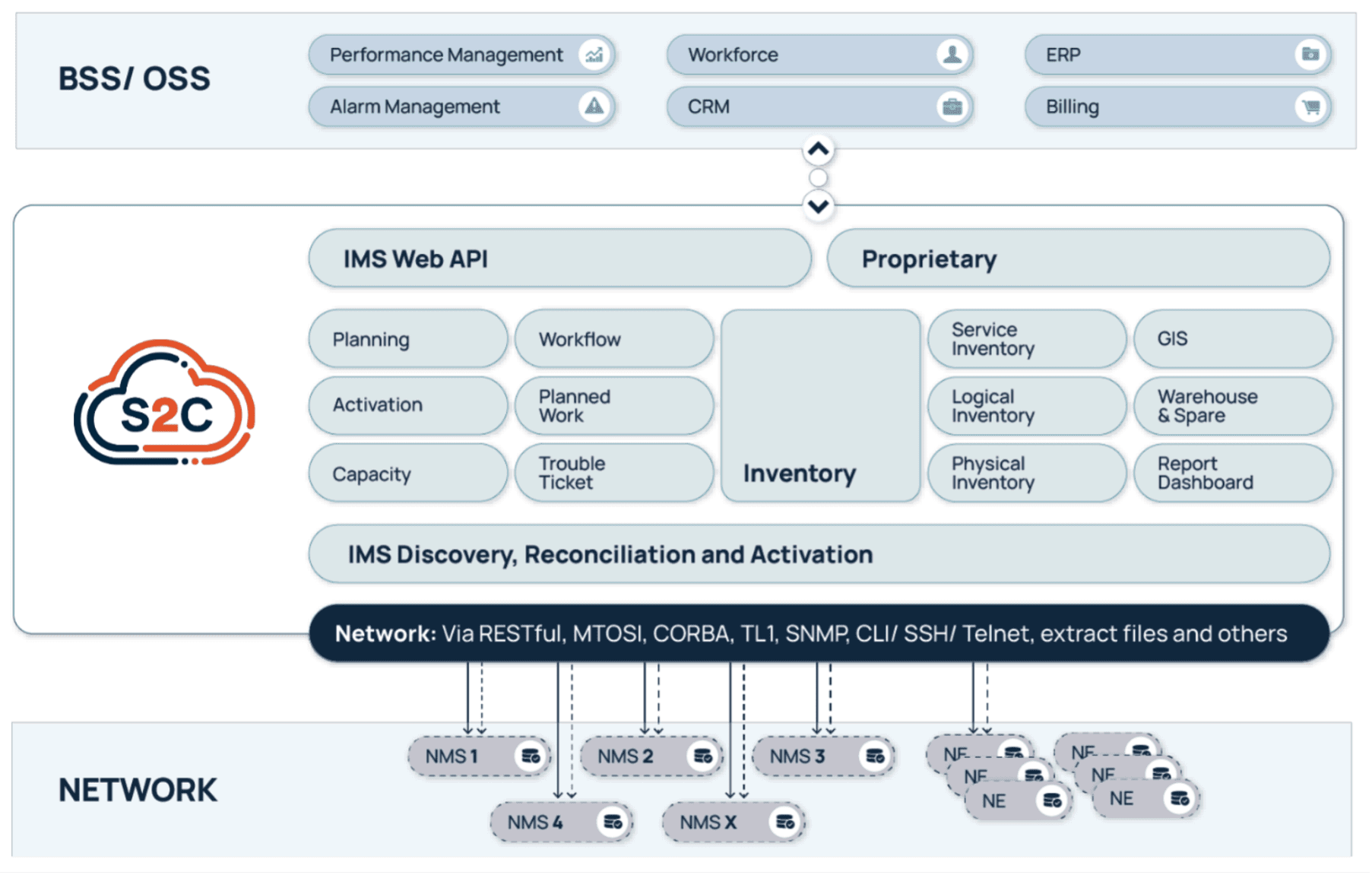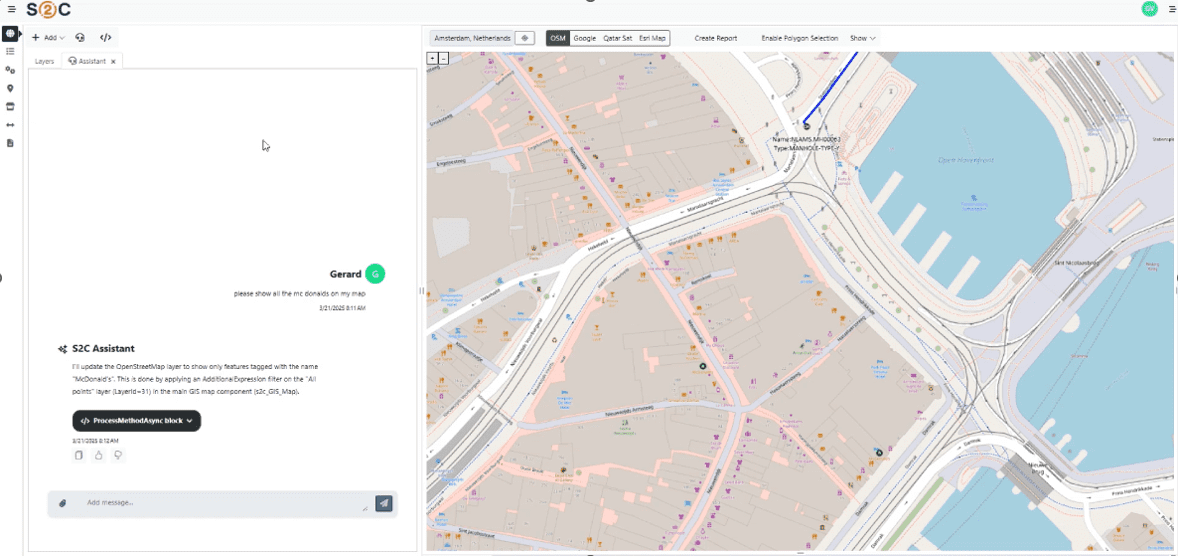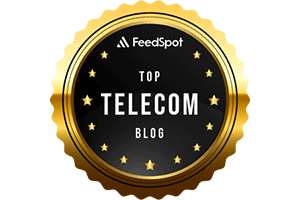VC4 Advances OSS Transformation with an Efficient and Reliable AI enabled Network Inventory System
By Juhi Rani assisted by IEEE Techblog editors Ajay Lotan Thakur and Sridhar Talari Rajagopal
Introduction:
This year, 2025, VC4 [a Netherlands Head Office (H/O) based Operational Support System (OSS) software provider] has brought sharp industry focus to a challenge that many experience in telecom. Many operators/carriers still struggle with broken, unreliable, and disconnected inventory systems. While many companies are demoing AI, intent-based orchestration, and autonomous networks, VC4’s newly branded offering, Service2Create (or S2C as it’s known to some), is refreshingly grounded. Also as we have learnt very quickly, bad data into AI is a “no-no”. None of the orchestration and autonomous networks, will work accurately if your OSS is built on flawed data. The age-old saying “Garbage in, Garbage out” comes to mind.
VC4’s platform, Service2Create (S2C), is a next-generation OSS inventory system that supports the evolving needs of telecom operators looking to embrace AI, automate workflows, and run leaner, smarter operations. Service2Create is built from over two decades of experience of inventory management solutions – IMS. By focusing on inventory accuracy and network transparency, S2C gives operators a foundation they can trust.
Inventory: The Most Underestimated Barrier to Transformation
In a post from TM Forum, we observed that operators across the world are making huge investments in digital transformation but many are slowed by a problem closer to the ground: the inability to know what exactly is deployed in the network, where it is, and how it’s interconnected.
VC4 calls this the “silent blocker” to OSS evolution.
Poor mis-aligned inventory undermines everything. It breaks service activations, triggers unnecessary truck rolls, causes billing mismatches, and frustrates assurance teams. Field engineers often discover real-world conditions that don’t match what’s in the system, while planners and support teams struggle to keep up. The problem doesn’t just stop with network data.
In many cases, customer records were also out of date or incomplete… and unknown inventory can also be a factor. Details like line types, distance from the central office, or whether loading coils were present often didn’t match reality. For years, this was one of the biggest issues for operators. Customer databases and network systems rarely aligned, and updates often took weeks or months. Engineers had to double-check every record before activating a service, which slowed delivery and increased errors. It was a widespread problem across the industry and one that many operators have been trying to fix ever since.
Over time, some operators tried to close this gap with data audits and manual reconciliation projects, but those fixes never lasted long. Networks change every day, and by the time a cleanup was finished, the data was already out of sync again.
Modern inventory systems take a different approach by keeping network and customer data connected in real time. They:
- Continuously sync with live network data so records stay accurate.
- Automatically validate what’s in the field against what’s stored in the system.
- Update both customer and network records when new services are provisioned.
In short, we’re talking about network auto-discovery and reconciliation, something that Service2Create does exceptionally well. This also applies for unknown records, duplicate records and records with naming inconsistencies/variances.
It is achieved through continuous network discovery that maps physical and logical assets, correlates them against live service models, and runs automated reconciliation to detect discrepancies such as unknown elements, duplicates, or naming mismatches. Operators can review and validate these findings, ensuring that the inventory always reflects the true, real-time network state. A more detailed explanation can be found in the VC4 Auto Discovery & Reconciliation guide which can be downloaded for free.
Service2Create: Unified, Reconciled, and AI-Ready
Service2Create is designed to reflect the actual, current state of the network across physical, logical, service and virtual layers. Whether operators are managing fiber rollout, mobile backhaul, IP/MPLS cores, or smart grids, S2C creates a common source of truth. It models infrastructure end-to-end, automates data reconciliation using discovery, and integrates with orchestration platforms and ticketing tools.
To make the difference clearer here is the table below shows how Service2Create compares with the older inventory systems still used by many operators. Traditional tools depend on manual updates and disconnected data sources, while Service2Create keeps everything synchronized and validated in real time.
Comparison between legacy inventory tools and Service2Create (S2C)
| Feature | Legacy OSS Tools | VC4 Service2Create (S2C) |
|---|---|---|
| Data reconciliation | Manual or periodic | Automated and continuous |
| Inventory accuracy | Often incomplete or outdated | Real-time and verified |
| Integration effort | Heavy customization needed | Standard API-based integration |
| Update cycle | It takes days or weeks | Completed in hours |
| AI readiness | Low, needs data cleanup | High, with consistent and normalized data |
What makes it AI-ready isn’t just compatibility with new tools, it’s data integrity. VC4 understands that AI and automation only perform well when they’re fed accurate, reliable, and real-time data. Without that, AI is flying blind.
Built-in Geographic Information System (GIS) capabilities help visualize the network in geographic context, while no/low-code workflows and APIs support rapid onboarding and customization. More than software, S2C behaves like a data discipline framework for telecom operations.
Service2Create gives operators a current, trusted view of their network, improving accuracy and reducing the time it takes to keep systems aligned.
AI is Reshaping OSS… But only if the Data is Right
AI is driving the next wave of OSS transformation from automated fault resolution and dynamic provisioning to predictive maintenance and AI-guided assurance. But it’s increasingly clear: AI doesn’t replace the need for accuracy; it demands it.
In 2025, one common thread across operators and developers was this: telcos want AI to reduce costs, shorten response times, and simplify networks. According to a GSMA analysis, many operators continue to struggle as their AI systems depend on fragmented and incomplete datasets, which reduces overall model accuracy.
VC4’s message is cutting through: AI is only as useful as the data that feeds it. Service2Create ensures the inventory is trustworthy, reconciled daily with the live network, and structured in a way AI tools can consume. It’s the difference between automating chaos and enabling meaningful, autonomous decisions.
Service2Create has been adopted with operators across Europe and Asia. In national fiber networks, it’s used to coordinate thousands of kilometers of rollout and maintenance. In mixed fixed-mobile environments, it synchronizes legacy copper, modern fiber, and 5G transport into one unified model.
Designed for Operational Reality
VC4 didn’t build Service2Create for greenfield labs or ideal conditions. The platform is designed for real-world operations: brownfield networks, legacy system integrations, and hybrid IT environments. Its microservices-based architecture and API-first design make it modular and scalable, while its no/low-code capabilities allow operators to adapt it without long customization cycles. See the diagram below.
S2C is deployable in the cloud or on-premises and integrates smoothly with Operational Support System / Business Support System (OSS/BSS) ecosystems including assurance, CRM, and orchestration. The result? Operators don’t have to rip and replace their stack – they can evolve it, anchored on a more reliable inventory core.
What Industry Analysts are Saying
In 2025, telco and IT industry experts are also emphasizing that AI’s failure to deliver consistent ROI in telecom is often due to unreliable base systems. One IDC analyst summed it up: “AI isn’t failing because the models are bad, it’s failing because operators still don’t know what’s in their own networks.”
A senior architect from a Tier 1 European CSP added, “We paused a closed-loop automation rollout because our service model was based on inventory we couldn’t trust. VC4 was the first vendor we saw this year that has addressed this directly and built a product around solving it.”
This year the takeaway is clear: clean inventory isn’t a nice-to-have. It’s step one.
Looking Ahead: AI-Driven Operations Powered by Trusted Inventory
VC4 is continuing to enhance Service2Create with capabilities that support AI-led operations. Currently, S2C is enhanced with AI-powered natural language interfaces through Model Context Protocol (MCP) servers. This creates a revolutionary way for users to access their data and makes it also easier for them to do so. Simply ask for what you need, in plain language, and receive instant, accurate results from your systems of record.
The S2C platform now offers multiple synchronized access methods:
- Natural Language Interface
- Ask questions in plain language: “Show me network capacity issues in Amsterdam”
- AI translates requests into precise system queries
- No training required – productive from day one
- Direct API Access via MCP
- Programmatic access using Language Integrated Query (LINQ) expressions
- Perfect for integrations and automated workflows
- Industry-standard authentication (IDP)
- S2C Visual Platform
- Full-featured GUI for power users
- Parameterized deeplinks for instant component access
- Low/no-code configuration capabilities
- Hybrid Workflows
-
- Start with AI chat, graduate to power tools
- AI generates deeplinks to relevant S2C dashboards
Export to Excel/CSV for offline analysis
-
What It All Comes Down To
Digital transformation sounds exciting on a conference stage, but in the trenches of telecom operations, it starts with simpler questions. Do you know what’s on your network? Can you trust the data? Can your systems work together?
That’s what Service2Create is built for. It helps operators take control of their infrastructure, giving them the confidence to automate when ready and the clarity to troubleshoot when needed.
VC4’s approach isn’t flashy. It’s focused. And that’s what makes it so effective – a direction supported by coverage from Subseacables.net, which reported on VC4’s partnership with AFR-IX, to automate and modernize network operations across the Mediterranean.
………………………………………………………………………………………………………………….
About the Author:
Juhi Rani is an SEO specialist at VC4 B.V. in the Netherlands. She has successfully directed and supervised teams, evaluated employee skills and knowledge, identified areas of improvement, and provided constructive feedback to increase productivity and maintain quality standards.
Juhi earned a B. Tech degree in Electronics and Communications Engineering from RTU in Jaipur, India in 2015.
……………………………………………………………………………………………………………………………………………………………………..
Ajay Lotan Thakur and Sridhar Talari Rajagopal are esteemed members of the IEEE Techblog Editorial Team. Read more about them here.












